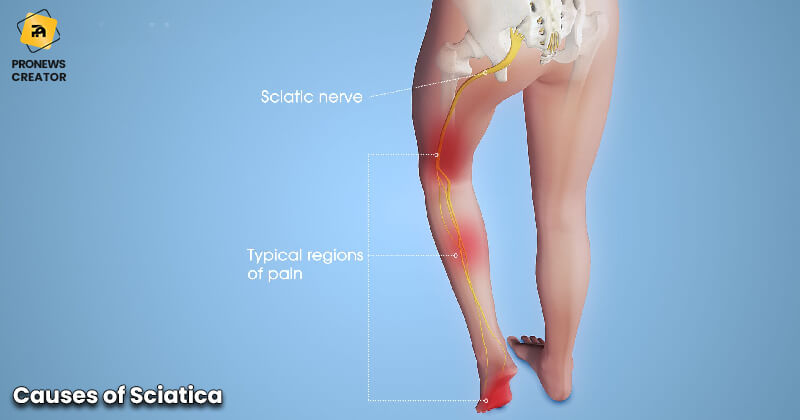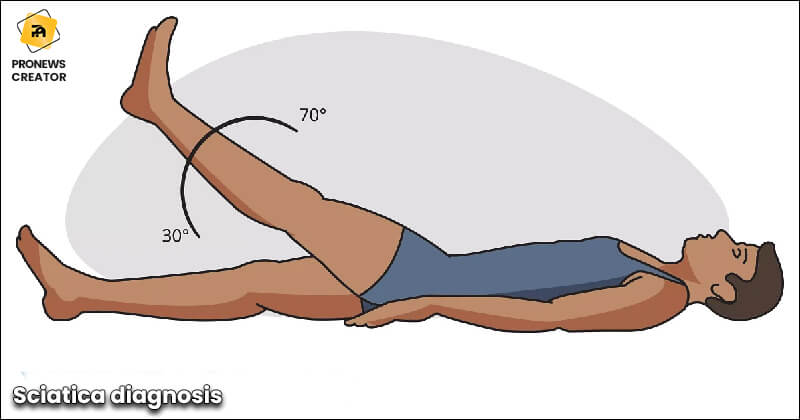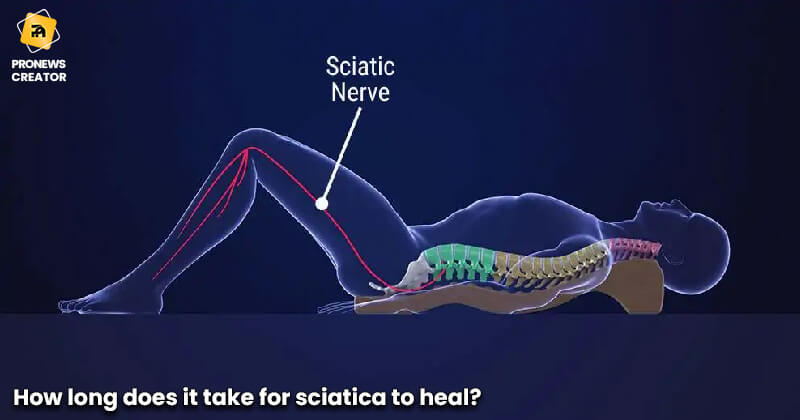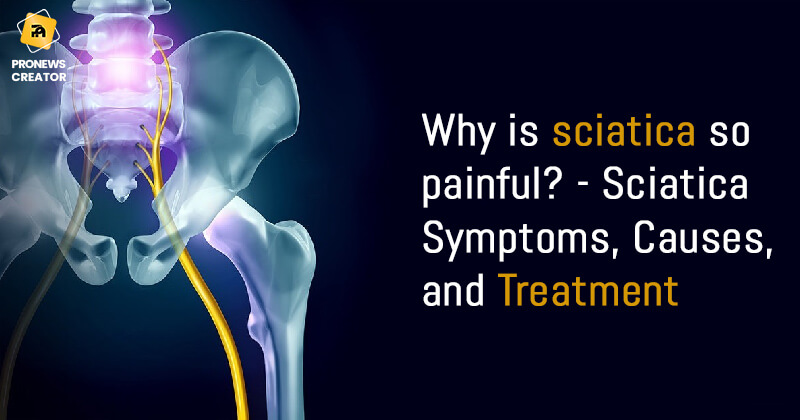Nerve pain is one of the most severe sorts of pain.
It conjures images of electric shock, burning heat, and shooting lightning bolts.
The most dreaded type of spinal nerve harm is arguably sciatica, which causes low back and leg discomfort.
“Why is sciatica so painful?” patients frequently inquire.
They frequently feel that sciatica is distinct from other types of spinal nerve pain, but this is not the case.
You may have sciatica if you experience pain that radiates down your leg from your lower back or buttock.
Table of Contents
What is sciatica?
Sciatica directs to leg pain, weakness, numbness, or tingling. Sciatica is nerve pain caused by an injury or irritation to the sciatic nerve in the buttock/gluteal region.

Causes of Sciatica
The sciatic nerve runs from the lower back down each leg and through the hips and buttocks.
Sciatica is so painful pain is brought on by:
| A herniated or slipped disc | Nerve pinching or compression |
| Spinal stenosis | Nerve inflammation |
| Piriformis syndrome (a pain problem involving the buttocks’ thin muscles) | Pelvic injury or fracture |
| Tumours | Spondylolisthesis |

Symptoms
Sciatica is so painful and can occur at any point along the nerve route. Sciatica usually concerns only one side of the body. It is most likely to travel from the low back to the buttock and the back of a leg and calf.
Sciatica symptoms include:
| Mild ache to sharp pain | Boiling pain |
| Feeling like a jolt or electric shock | Worse pain when coughing, sneezing, or sitting for a period |
| Numbness | Tingling |
| Muscle weakness in the leg or foot |

What are the Risk factors of sciatica?
If you think why is sciatica so painful you need to know its risk factors. You are a more significant chance of sciatica if you:
• Have an accident/previous injury
| Ageing | Overweight |
| Lack a muscular core | Lack of a muscular core |
| Lack of appropriate posture in the weight room | Retain diabetes |
| Have osteoarthritis | Have an accident/previous injury |
| Conduct an idle lifestyle | Smoke |

Why is sciatica so painful?
Sciatica is the most severe type of nerve pain, and this is due to reputation more than truth.
One of the causes sciatica is so popular is that the roots of the sciatic nerve feed into the legs, and we use our legs a lot.
The agony can be severe in extreme cases that induce paralysis, muscle weakness, or total numbness.

When should you see a doctor?
Gentle sciatica generally goes away on its own. Contact your primary care practitioner if self-care approaches do not relieve your symptoms and sciatica becomes so painful. Seek emergency medical attention for:
| Severe discomfort in the low back or leg, as well as numbness or muscular defect in a leg | Pain following a traumatic injury, such as a car accident |
| Bowel or bladder control issues |

Sciatica diagnosis
The doctor will first conduct a history and physical assessment, after which he will do X-rays, MRI, or MR neurography studies to establish the presence of lumbar nerve root compression.

Sciatica treatment
Nonsurgical therapies may include:
| Using cold bags or heat | Do medicines |
| Physical therapy | Epidural steroid injections |
| Extreme cases may direct spinal decompression surgery |
Conservative, nonsurgical techniques should be explored initially when acute sciatica symptoms emerge in the absence of weakness, changes in bowel or bladder function, or evidence of infection (such as fevers, chills, or night sweats).
The fastest way to cure sciatica
Doctors use Physical therapy to give instant pain relief, address the underlying cause of sciatica nerve pain, and prevent additional damage and flare-ups (ice, heating, massage, stretching, strength, and flexibility exercises).

How to prevent Sciatica?
The method of prevention differs according to the reason for the nerve injury. Avoid extended sitting or resting with buttock pressure.
You can have strong back and abdominal muscles to avoid sciatica. It’s a concept to undertake core-strengthening workouts as you get older.
You can take the following steps to care for your back at home:
| Bed rest is NOT advised | Early on, back workouts are essential to strengthen your back. |
| Limit your activity for the first few days. Then, gradually resume your normal workouts | Begin exercising again in 2 to 3 weeks. Include activities to strengthen your abdominal (core) muscles and increase spine flexibility |
| Avoid weighty lifting and back bending for the first 6 weeks after the pain begins |

When Sciatica Is Severe?
Sciatica symptoms, such as cauda equina syndrome, infection, or spinal tumours, may signal a dangerous medical problem. Among these symptoms are, but are not limited to:
| Neurological symptoms that deepen with time, such as leg weakness | Signs in both legs |
| Dysfunction of the bowel or bladder | Dysfunction of the sexual organs |

Is it possible to get rid of sciatica permanently?
Contrary to popular belief, you can permanently treat sciatica without surgery or a lifetime of medicine.
You can do it by addressing the root cause of your disease with natural, time-tested therapies such as physical therapy, massage, stretching, and exercises.

How long does it take for sciatica to heal?
The majority of patients who suffer from sciatica recover in 4 to 6 weeks with nonsurgical sciatica treatment. If there are neurological problems, healing may take longer.
However, up to 33% of persons may experience chronic symptoms for up to a year. 6 Surgery may be necessary when there is substantial nerve compression and worsening symptoms.



